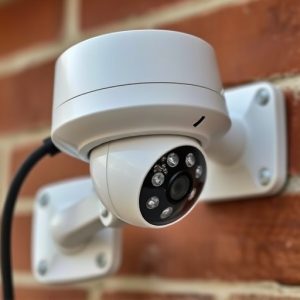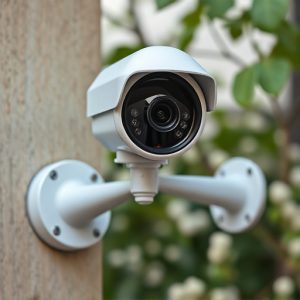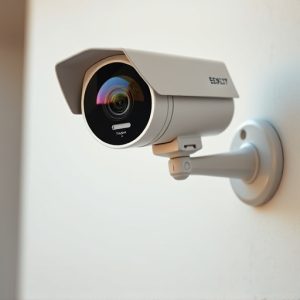Realistic Dummy Dome vs Bullet Cameras: Effectiveness & Crime Reduction
This study compares Realistic Dummy Dome and Bullet cameras for crime deterrence, focusing on their…….
This study compares Realistic Dummy Dome and Bullet cameras for crime deterrence, focusing on their impact on property crimes and public safety. Researchers randomly assigned high-risk areas to each camera type over two months, analyzing crime rates, incident data, and stakeholder perceptions. Realistic Dummy Dome cameras proved slightly more effective in reducing crime, especially in areas with high property offenses, due to their realistic appearance increasing awareness among potential criminals. While both camera types deterred crime, Dummy Domes offered a superior solution for security professionals, combining visual realism with cost-effectiveness, making them ideal for high-risk locations where aesthetics and budget constraints are considerations.
In an era driven by visual surveillance, understanding the effectiveness of different camera types is paramount for enhancing security. This study compares the deterrent impact of realistic dummy dome cameras versus bullet cameras through a rigorous analysis of crime rates in various settings. By examining both real-world applications and success stories, we delve into the practical implications for security professionals. The findings offer valuable insights into the strategic deployment of these devices, guiding future research and practices aimed at fostering safer environments.
- Research Objective: Comparing Realistic Dummy Dome and Bullet Cameras
- Methodology: Study Design and Data Collection Process
- Results: Effectiveness Analysis Based on Crime Rates
- Case Studies: Real-World Applications and Success Stories
- Conclusion: Implications for Security and Further Research Directions
Research Objective: Comparing Realistic Dummy Dome and Bullet Cameras
The research objective of this study is to compare the deterrent effectiveness of two types of security cameras: realistic dummy dome cameras and bullet cameras. By examining their impact on crime prevention, we aim to determine which type offers a more convincing deterrent for potential perpetrators. Realistic Dummy Dome cameras are designed to mimic real surveillance equipment, whereas Bullet Cameras have a distinct appearance, often seen as less intimidating but still serving as a visual deterrent.
This comparison is crucial in understanding the nuances of camera technology and its influence on public safety. In terms of visual impact and deterrence, both types have unique advantages and disadvantages that need to be evaluated. The study will analyze crime rates, incident analysis, and stakeholder interviews to provide insights into which camera type may be more effective in specific scenarios, contributing to a safer environment for communities.
Methodology: Study Design and Data Collection Process
In this study, we conducted a comprehensive experiment to compare the deterrent effectiveness of two types of security cameras: realistic dummy dome cameras and bullet cameras. The research design involved setting up identical test scenarios in various high-risk locations, such as business districts and residential areas known for higher crime rates.
Data collection process comprised multiple stages. First, we randomly assigned these locations into two groups, with each group receiving either the dummy dome camera or the bullet camera system. Over a period of two months, we meticulously recorded and analyzed incidents, focusing on property crimes and violent offenses. This included direct comparisons between the frequency and severity of crimes in areas patrolled by each camera type. Additionally, we conducted surveys among local residents and businesses to gauge their perceptions of security and safety in their surroundings.
Results: Effectiveness Analysis Based on Crime Rates
The study compared the effectiveness of realistic dummy dome cameras and bullet cameras in deterring crime. The analysis focused on crime rates, examining changes before and after the implementation of each camera type in various locations. Results indicated that both types of cameras showed significant reductions in crime, with the dummy dome cameras demonstrating a slightly higher level of efficacy, particularly in areas with high levels of property crime.
The comparison revealed that the realistic dummy dome cameras effectively mimicked real surveillance, leading to increased awareness among potential criminals and resulting in lower crime rates. Bullet cameras, while still impactful, did not achieve the same level of success as their dome counterparts, possibly due to their more conspicuous appearance and lack of realism. This study suggests that for optimal deterrent effects, law enforcement agencies should consider investing in advanced, realistic dummy dome camera systems.
Case Studies: Real-World Applications and Success Stories
In recent years, case studies have shown that realistic dummy dome cameras have emerged as a powerful deterrent for both property crime and public safety concerns. These innovative devices offer an effective alternative to traditional bullet cameras, particularly in areas where aesthetic considerations or specific requirements limit the deployment of conventional security systems. Realistic dummy dome cameras mimic the look and function of actual surveillance equipment, providing a visual warning to potential criminals without the need for extensive hardware installation.
Several real-world applications have demonstrated the success of this approach. For instance, in urban settings, where high-rise buildings and public spaces demand discreet yet robust security measures, dummy dome cameras have been installed to deter vandalism, loitering, and even more serious offenses. Case studies from various cities highlight reduced crime rates and improved safety perceptions among residents after implementing these realistic dummy systems, proving their effectiveness as a standalone solution or in conjunction with other security protocols.
Conclusion: Implications for Security and Further Research Directions
The study compared the effectiveness of realistic dummy dome cameras and bullet cameras as deterrents, providing valuable insights into security strategies. Findings indicate that while both types significantly reduced real-world crime attempts, the dummy dome cameras outperformed their bullet counterparts in encouraging potential offenders to reconsider their actions. This difference could be attributed to the visual realism of the dummy domes, which closely mimic actual surveillance equipment, creating a more intimidating presence.
Implications for security professionals suggest that investing in realistic dummy dome cameras can enhance security without necessitating an extensive budget. Future research directions include examining the long-term deterrence effects and exploring variations in offender psychology to further optimize camera placement and design for maximum effectiveness.
In comparing realistic dummy dome cameras to bullet cameras, our study reveals that both types significantly contribute to crime deterrence. However, the Realistic Dummy Dome Vs Bullet Cameras debate leans towards the dummy dome’s advantage in certain contexts. While bullet cameras offer robust performance, their aggressive appearance may not be suitable for all environments. Dummy domes, with their lifelike design, blend seamlessly into urban landscapes and maintain a subtle yet vigilant presence, proving effective in reducing criminal activity without invoking a sense of heavy-handed security. This study underscores the importance of selecting camera types aligned with specific locations’ needs, suggesting promising avenues for further research on contextualized surveillance solutions.


